| –
| Connect the pressure gauge - V.A.G 1318- with the adapter -V.A.G 1318/12- to the fuel feed line. |
| –
| Fit the hose -V.A.G 1318/16- onto the adapter -V.A.G 1318/11- of the pressure measuring device and hold it in a measuring glass. |
| –
| Open shut-off cock of the pressure gauge. The lever then points in the direction of flow -A-. |
| –
| Activate remote control -V.A.G 1348/3 A-. While doing so, slowly close the shut-off cock until the pressure gauge displays 0.4 MPa (4 bar) overpressure. Now do not make any further changes to the position of the shut-off cock. |
| –
| The fuel flow rate of the fuel pump is dependent on the battery voltage. Therefore connect the multimeter with adapter cables from the measuring tool set, e.g. -V.A.G 1594 C-, to the vehicle battery. |
| –
| Activate remote control for 30 seconds while measuring the battery voltage. |
|
|
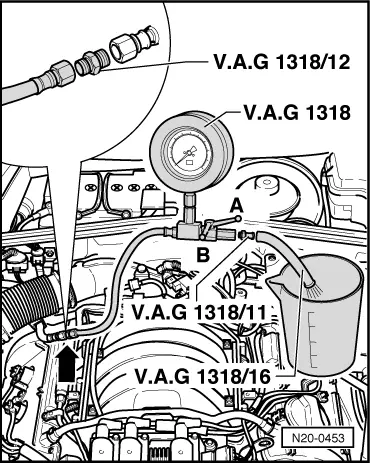
|
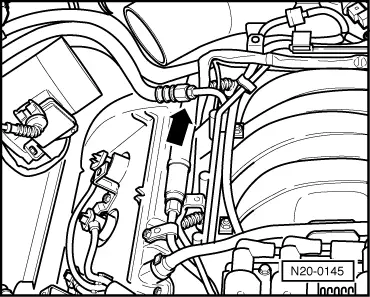

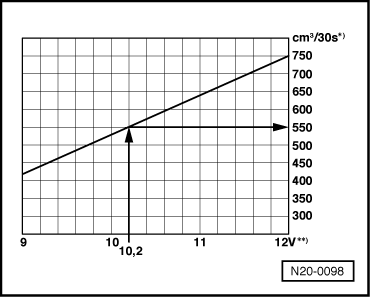
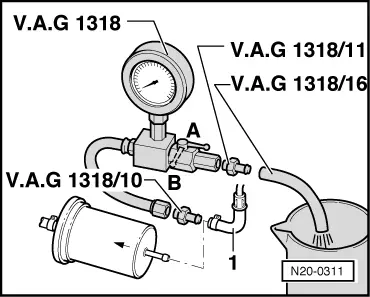
 Note
Note Note
Note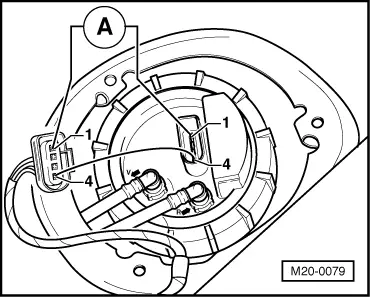




 Note
Note Note
Note